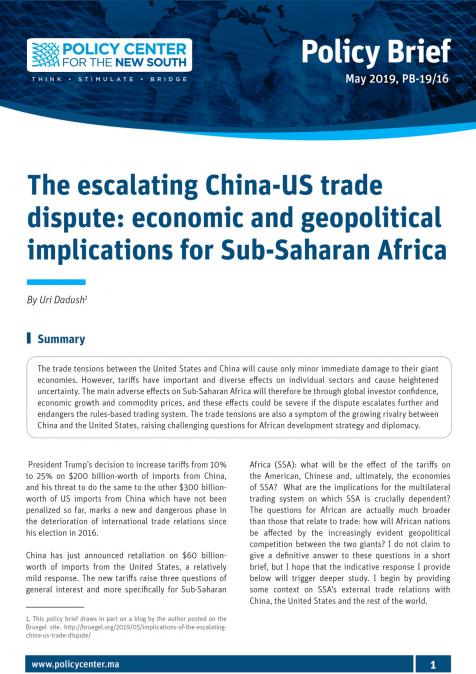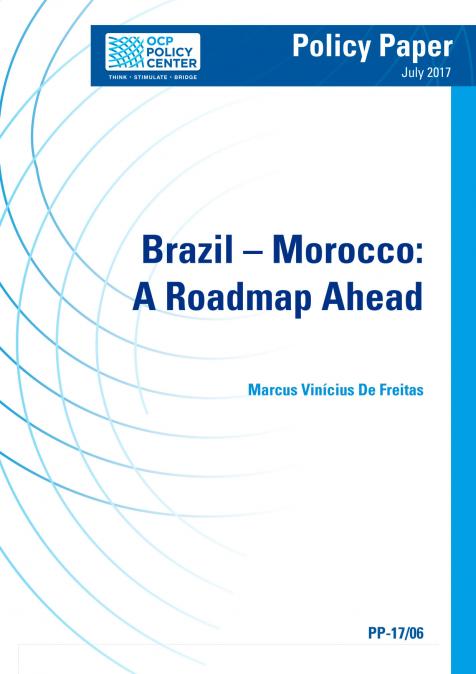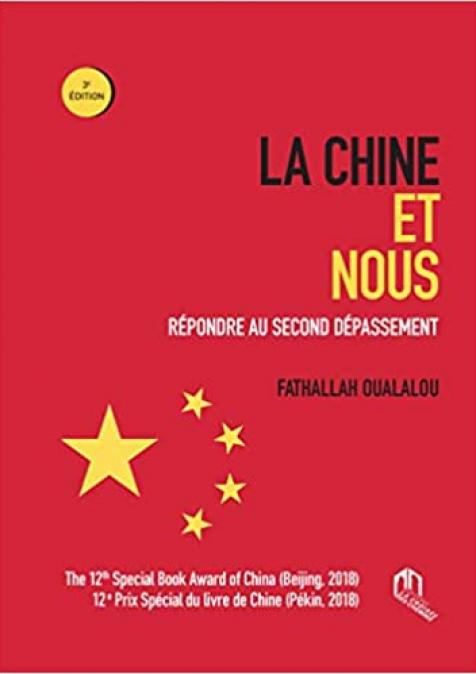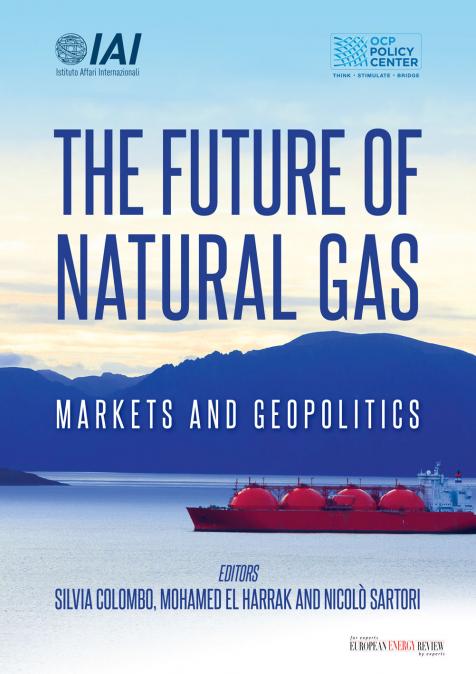Publications /
Policy Brief
The multilateral, rule-based trading system underpinned by the World Trade Organization (WTO) has been undermined by the unilateral imposition of U.S. tariffs. Crucially, the foundational principle of non-discrimination among WTO members has been abandoned. While many countries have attempted to negotiate with the U.S. to resolve tariff disputes, they have simultaneously sought to deepen trade ties with each other through plurilateral and regional trading arrangements. In this sense, plurilateralism and regionalism can be viewed as alternatives to multilateralism in reconfiguring international trading relationships. These approaches can be useful, though not without limitations, and they will continue to drive both trade diversion and trade creation during and after the tariff war.
Introduction
The multilateral, rule-based trading system underpinned by the WTO has been undermined by the unilateral imposition of U.S. tariffs on nearly all its major trading partners. Notably, the reciprocal tariffs announced by President Donald Trump on April 2, 2025 ranged from a baseline of 10% to as high as 50%—intended, in his view, to counter the disadvantages the U.S. faced under the existing system. More consequential than the rising tariffs, however, has been the abandonment of the foundational principle of non-discrimination among WTO members, accompanied by heightened trade policy uncertainty.
The ensuing bilateral negotiations during the 90-day pause in the implementation of the reciprocal tariffs were thrown into uncertainty after the U.S. Court of International Trade ruled—in May 2025¾that the President had exceeded his authority under the International Economic Emergency Power Act of 1977 (IEEPA) in imposing such tariffs. The Trump administration appealed the decision at the Federal Circuit Court of Appeals and the case is expected to eventually reach the Supreme Court.
On July 31, the White House announced a decision further modifying the reciprocal tariff rates to somewhat lower than the original schedule but still ranging from 10% to 41% across different groups of countries. In parallel, sections 201 and 301 of the Trade Act of 1974 and section 232 of the Trade Expansion Act of 1962 also remain in effect. As of August 7, 2025, the average tariff rate in the U.S. is estimated at 18.3%¾the highest since 1934. For comparison, the average effective tariff rate at the beginning of 2025 was 2.4%.
Other countries have responded to U.S. measures by seeking negotiations with American officials, adopting approaches that vary from threats of retaliation to accommodation, depending on the bilateral balance of power vis-à-vis the U.S. By the end of the 90-day pause, eleven countries¾including the UK, Vietnam, the EU and Japan¾had reached preliminary trade deals with Washington—tentatively agreeing to lower rates than the maximums announced on April 2 but still higher than pre-tariff levels. Meanwhile, China and the U.S. agreed on a framework to guide future negotiations and implementation—talks that have since been extended several times.
Essentially, global trade has bifurcated into two distinct regimes. Trade with the U.S.¾which in 2023 accounted for 10.22% of world exports and 13.16% of world imports¾is increasingly subject to high tariffs and other barriers, shaped by unilateral U.S. actions and subsequent bilateral negotiations. By contrast, trade among other countries is likely to continue under largely unchanged pre-2025 tariff structures. To mitigate the impact of U.S. measures, many states have sought to strengthen trade and investment ties with one another. In this context, plurilateral and regional arrangements emerge as logical alternatives to the fraying multilateral system. While they offer opportunities to cushion the shock of U.S. protectionism, their effectiveness will depend on specific circumstances. Ultimately, the extent to which such arrangements are implemented will shape the patterns of trade diversion and trade creation during and after the tariff war.
Plurilateral Arrangements
Plurilateralism refers to initiatives whereby a subset of countries¾sometimes drawn from the full membership of organizations such as the WTO (164 members)¾negotiate agreements on specific issues when progress through universal multilateral consensus proves unattainable.
Following the failure of the Doha Round of multilateral trade liberalization negotiations, launched in 2001, plurilateral arrangements have increasingly been touted as a viable path for groups of like-minded countries to advance trade liberalization. This approach gained further momentum in 2017 when the U.S. blocked the appointment of new members to the WTO Appellate Body, effectively crippling the dispute settlement mechanism¾a cornerstone of the rule-based trading system. Furthermore, in March 2025, the U.S. decided to suspend its 2024 and 2025 financial contributions to the WTO as part of a review of U.S. participation in international organizations “to determine if they are contrary to U.S. interests.” One month later, U.S. Congressman Tom Tiffany introduced a joint resolution calling for the country’s formal withdrawal from the WTO.
So far, several plurilateral initiatives have been launched. The most notable is the Multi-Party Interim Agreement (MPIA), established in 2020 as a substitute for the non-functioning Appellate Body. The MPIA currently counts 26 members¾or 53 if the 27 EU member states are tallied individually¾who have agreed to refer appeals of dispute settlement rulings to a ten-member panel. Since its creation, the MPIA has adjudicated only a handful of cases, including those brought by Turkey and Colombia—far fewer than the 195 cases reviewed by the Appellate Body before 2020 (averaging almost eight cases annually). More recently, however, the EU won a ruling by the MPIA in its appeal against China’s restrictions on intellectual property rights.
The disarray in trade dispute resolution has prompted the European Commission and Germany to propose that the EU spearhead the creation of an alternative international trade organization to replace the paralyzed WTO.
More promising plurilateral agreements include:
i) The Agreement on Government Procurement, which mutually opens government procurement markets among its 49 signatories.
ii) The Joint Statement Initiatives on Domestic Regulation of Services, adopted in 2021.
iii) The Agreement on Fisheries Subsidies, adopted in 2022.
iv) The Investment Facilitation for Investment concluded in 2023, which aims to ease the participation of less developed countries in global investment flows.
Experiences to date suggest that the plurilateral approach enables a coalition of the willing to adopt measures addressing specific issues of shared interest. However, it remains an imperfect substitute for multilateralism, particularly in areas that require truly global responses.
Regional Free Trade Agreements (RFTAs)
A more prominent development has been the proliferation of RFTAs. According to the WTO, there are currently . A WTO study found that the share of global imports involving RFTA members rose sharply from 37% in 2017 to 52% in 2022. However, the share of potential preferential imports among RFTA members increased more moderately, from 17% in 2017 to 23% in 2022.
RFTAs establish preferential trade agreements between two or more members, often benefiting from geographical and cultural proximity. More recently, they have been reinforced by the nearshoring trend, whereby countries seek to anchor key nodes of supply chains in friendly, neighboring economies to mitigate risks of disruption from geopolitical or natural shocks.
By design, RFTAs constitute a derogation from the WTO’s core principle of non-discrimination among members. allows such agreements under certain conditions¾notification, transparency mechanisms, and openness to accession by other countries. In practice, preferential trade measures have been largely confined to RFTA members, excluding non-members.
The result has been a fragmentation of the global trading system, making it more complex, less transparent and more costly¾particularly for developing countries. These impediments risk offsetting much of the trade creation that RFTAs are designed to generate.
Examples of Notable RFTAs
The European Union (EU)
The earliest and most successful RFTA was the European Economic Community (EEC) launched in 1957 by the Treaty of Rome to establish a regional free trade area and custom union comprising Belgium, France, Italy, Luxemburg, the Netherlands, and West Germany. The EEC evolved into the European Union (EU) with the Maastricht Treaty in 1992, creating the Single Market to ensure the free movement of goods, services, capital, and labor among its member states—now numbering 27.
In addition, 20 EU members have joined the European Monetary Union, with the European Central Bank (ECB) managing a common monetary policy and issuing the euro. The euro has become the second most important global reserve and transaction currency after the U.S. dollar.
Intra-regional trade among EU members accounts for about 65% of their international trade, although it has grown more slowly in recent years compared to external trade. This suggests that opportunities for further trade expansion within the EU are nearly exhausted; further growth depends on external trade agreements and the full implementation of the Single Market.
The Association of Southeast Asian Nations (ASEAN)
ASEAN was formed in 1967, initially focusing on regional cooperation before launching the ASEAN Free Trade Area (AFTA) in 1992. AFTA reduced tariffs, boosting trade and investment across the region. In 2015, the ASEAN Economic Community (AEC) was established, followed by the 2016-2015 Blueprint aimed at deeper economic integration to drive shared prosperity. In May 2025, ASEAN adopted its first five year Strategic Plan (2026-2030) to advance the full implementation of its long-term strategic vision.
Reflecting the success of its regional cooperation, ASEAN’s GDP exceeded $4 trillion in 2024, accounting for 8% of world trade and attracting 17% of global foreign direct investment. It has also become one of the top trading partners for China, the U.S., the EU, Japan, and South Korea.
The USMCA
The U.S.-Canada-Mexico Agreement (USMCA) was signed in 2020, replacing the North American Free Trade Agreement (NAFTA), which had been in force from 1992 to 2020. Covering a combined population of more than 500 million people, the USMCA generates $1.8 trillion in annual trade and represents about 30% of the global economy.
The USMCA is considered a modern 21st-century trade agreement, incorporating strict labor and environmental standards, as well as provisions for digital trade and intellectual property rights. Particularly notable are requirements that 40% of automobile parts be produced by workers earning at least $16 per hour to qualify for USMCA benefits, and that the agreement will be subject to review if any member negotiates trade deals with a non-market economy (e.g., China).
So far, the USMCA seems to be holding, with trade that complies with the pact’s requirements exempt from new U.S. tariffs—except in targeted sectors such as steel, aluminum, and autos (with specific carve-outs for Canada and Mexico). The agreement is scheduled for review, and potentially renegotiation, in 2026.
The CPTPP
The Comprehensive and Progressive Trans-Pacific Partnership (CPTPP) was launched in 2018, despite the withdrawal of its original proponent, the U.S., early in President Trump’s first term. The CPTPP now consists of 11 Asian-Pacific countries, recently expanded to include the UK, and accounts for 14.5% of the global economy.
The RCEP
The Regional Comprehensive Economic Partnership (RCEP) was launched in 2012 by the 10 ASEAN member states and six ASEAN FTA partners, and came into effect in 2022. With the objective of strengthening global supply chains, the RCEP includes a particularly useful feature: harmonized rules of origin under which the required minimum regional content of 40% can be certified by any member state and recognized by all others¾facilitating smoother trade flows.
The AfCFTA
The AfCTA entered into force in 2019, becoming the largest RFTA in the world. If fully implemented, it will create a fully integrated market of 1.7 billion people, with an estimated $6.7 trillion in combined consumer and business spending. Projections suggest that it could increase economic and employment growth by up to 1% annually.
Inter-Regional Trade and the Need to Upgrade RFTAs
While RFTAs have proven useful in promoting trade and investment among neighboring countries, there is limited evidence that they are consistently net trade-creating to the benefit of all members. For older RFTAs, such as the EU, a degree of economic convergence has already taken place, reducing the scope for comparative advantages and, consequently, the potential for further growth from already high levels of integration. This has led to slower growth in intraregional trade compared to external trade.
By contrast, younger RFTAs¾such as the AfCFTA¾hold significant potential for growth by leveraging existing comparative advantages. However, they face persistent obstacles, including political and ethnic diversity and weak infrastructure¾both in trade facilitation institutions and in physical networks, especially transportation.
As a result, outside of specific cases, better growth prospects may lie in inter-regional trade relationships, where countries and RFTAs from different regions bring greater diversity in economic profiles. Recent years have indeed seen a flurry of such inter-regional activities: the EU has sought to forge trade alliances with Mecosur, ASEAN, India, and Indonesia; Canada and the EU have worked to deepen their Comprehensive Economic and Trade Agreement (CETA); the UK has joined the CPTPP; and ASEAN has expanded engagement with the Gulf Cooperation Council (GCC).
Moreover, to stimulate the growth of cross-border commerce, RFTAs must be upgraded into deeper forms of integration, eventually evolving into single markets. This would provide a larger market base for producers and consumers, enabling them to reap not only the benefits of comparative advantage but also those of economies of scale. In other words, the challenge for many countries is not only to widen the network of RFTAs but to deepen existing ones.
Concretely, RFTAs need to advance toward Custom Unions and, in some cases, toward Economic Unions or Single Markets to fully capture the combined benefits of comparative advantages and economies of scale. However, it is important to underline that such advanced stages of integration require far greater structural convergence¾economically, politically, and socially¾than what is needed to sustain a free trade area.
Currently, there are only 16 Customs Unions worldwide. These unions eliminate tariffs and other internal trade barriers while applying a common external tariff to non-members. By doing so, they not only reduce transaction costs (in particular cross-border checks), but also enlarge market sizes, thus boosting economies of scale and enhancing attractiveness to foreign direct investment (FDI). Empirical studies have shown that Custom Unions tend to create more trade than they divert, while also reducing the risk of trade defection among members.
At present, only the EU Custom Union is complete, with foreign trade responsibility vested in the European Commission, while the others remain incomplete—exempting various goods sectors and allowing members to retain their authority to negotiate FTAs with third countries.
The next stage of economic integration involves establishing common markets, which ultimately allows the free movement of goods, services, capital, and labor among member states. Currently, there are six common markets: the European Union (EU), the Eurasian Economic Union (EAEU), the ASEAN Economic Community (AEC), the Caribbean Community (CARICOM), the Central African Common Market (CACM), and the East African Community (EAC).
Sometimes, in conjunction with common markets, member states also agree to establish a monetary union, sharing a common currency under the responsibility of a joint central bank. This eliminates currency risks among member countries engaged in cross-border trade. At present, there are six currency unions: the European Monetary Union (EMU, also known as the Eurozone), the Eastern Caribbean Currency Union (ECCU), the Western African Economic and Monetary Union (WAEMU), the Central African Economic and Monetary Community (CAEMC), and finally, the Common Monetary Area (CMA), consisting of Lesotho, Namibia, South Africa, and Eswatini, which share the South African rand—making it a quasi-monetary union.
Trade Diversion and Deflection Driven by Tariffs
Increased tariffs by the U.S. have triggered both trade diversion and deflection among affected countries. The U.S. is likely to cut back imports from high-tariff countries in favor of goods produced domestically or sourced from lower-tariff partners, to the extent possible. In turn, countries facing higher tariffs will reduce exports to the U.S. while attempting to redirect them to other markets.
According to WTO estimates, U.S. tariffs (as of mid-April 2025) will cause U.S. imports from China to fall by 77% in 2025, lowering China’s share of U.S. total imports by 11.1% and reducing the U.S. goods trade deficit vis-à-vis China. However, China is expected to expand exports to the rest of the world¾by 6% to Europe and 25% to Mexico and Canada, for example. Overall, the share of China’s exports absorbed by the G20 minus the U.S. climbed from 43.9% in 2017 to 52.3% in 2023.
This deeper penetration of Chinese goods into non-U.S. markets is also reflected in the rise of China’s share of global manufacturing value added by 3.3 percentage points over that period, reaching 33%. By contrast, combined share of the five countries that gained the most from declining Chinese exports to the U.S. (Vietnam, Mexico, India, Thailand, and South Korea) fell by 0.1 percentage points. The share of Western countries declined as well.
The WTO estimates seem to have been borne out by actual trade developments in the first half of 2025—as illustrated by three case examples. Of particular interest is the trade diversion by China. Its total trade increased by 2.9% in the first half of 2025 to RMB 21.79 trillion ($3.04 trillion), driven by export growth of 7.2% while imports declined by 2.7%. This widened its trade surplus to RMB 4.2 trillion ($0.59 trillion). The aggregate figures highlight that China’s trade with the U.S. fell by 10.4% to $289.4 billion, but trade increased by 4.7% with Belt and Road Initiative (BRI) countries to RMB 11.29 trillion ($1.57 trillion¾accounting for 51.8% of China’s total trade), by 9.6% with ASEAN, and by 6.9% with the EU, among others.
While increased exports to the rest of the world have cushioned China from the immediate impacts of U.S. tariffs, it is uncertain whether this momentum can be sustained in the medium term. China’s rising market share in many recipient countries is putting pressure on domestic producers as well as third-country competitors. Some governments may respond with protective measures to counter the surge of Chinese goods—for example, in sectors such as . Such moves could prompt retaliation by China, setting off potential second rounds of tariffs beyond the original U.S. measures, thereby amplifying the negative growth impacts of the tariff war.
Trade developments in the EU have followed a somewhat different trajectory but may eventually move in China’s direction. Exports from the EU to the U.S. surged by 59.5% year-on-year to €71.4 billion in March 2025, as U.S. companies and retailers rushed to front-load imports in anticipation of higher tariffs. Since then, EU exports to the U.S. slowed, growing only by 3.8% in April (to €47.6 billion), while exports to China fell by 15.9% to €16.3 billion. This combination led to a 1.9% decline in total extra-EU exports (i.e., from the EU to non-EU countries).
Based on these trade developments, the EU is likely to face declining exports to the U.S. as high tariffs take effect, and stagnant or falling exports to China as its domestic demand remains weak. This underlines the need for the EU to diversify trade opportunities beyond the U.S. and China, while also boosting internal economic dynamism by fully implementing the Single Market¾including the Banking and Capital Market Unions.
In the U.S., preemptive imports by companies ahead of higher tariffs helped push Vietnam’s to $70.9 billion in H1 2025, driving its trade surplus with the U.S. up 29% year-on-year to $62 billion. At the same time, Vietnam’s imports from China surged to $84.7 billion, resulting in a trade deficit of $55.6 billion—an increase from year-ago levels. These dynamics have reinforced U.S. complaints that Vietnam is functioning as a conduit for Chinese goods destined for the U.S. with limited domestic value added, thereby undermining the intent of U.S. tariffs on China. Given the scale of Vietnam’s trade surplus with the U.S.—equivalent to more than 20% of Vietnam’s GDP—any U.S. insistence on reducing this imbalance would pose significant risks to Vietnam’s growth trajectory.
Conclusion
In short, as multilateral trade agreements have gradually eroded, countries outside the U.S. have increasingly relied on plurilateral and regional trade arrangements. So far in 2025, trade diversion in response to elevated U.S. tariffs has been evident, but it remains unclear whether sufficient new trade can be generated to sustain robust trade growth. According to the Netherlands Bureau of Economic Policy Analysis (cpb.nl), world trade rose noticeably in the first quarter of 2025, driven by stockpiling of imports ahead of tariffs, but then declined in the second quarter and likely thereafter. The IMF’s latest World Economic Outlook Update projects that global trade in goods and services will slow from 3.5% in 2024 to 2.6% this year and 1.9% in 2026, in tandem with weaker global growth.
Equally importantly, the redirection of China’s exports from the U.S. to the rest of the world is placing intense competitive pressure on domestic manufacturers in many countries. They must now contend not only with U.S. tariffs but also with China’s export shock. As Jeffrey Wu notes, “China is not merely moving more goods; it is exporting a new, ruthlessly efficient production model, powered by automation, AI and state-guided industrial optimization.” Under the twin shocks of protectionism and intensified Chinese competition, countries will need to restructure their economies and pursue new opportunities to sustain growth in an increasingly uncertain and difficult global environment—a tall order for many.









